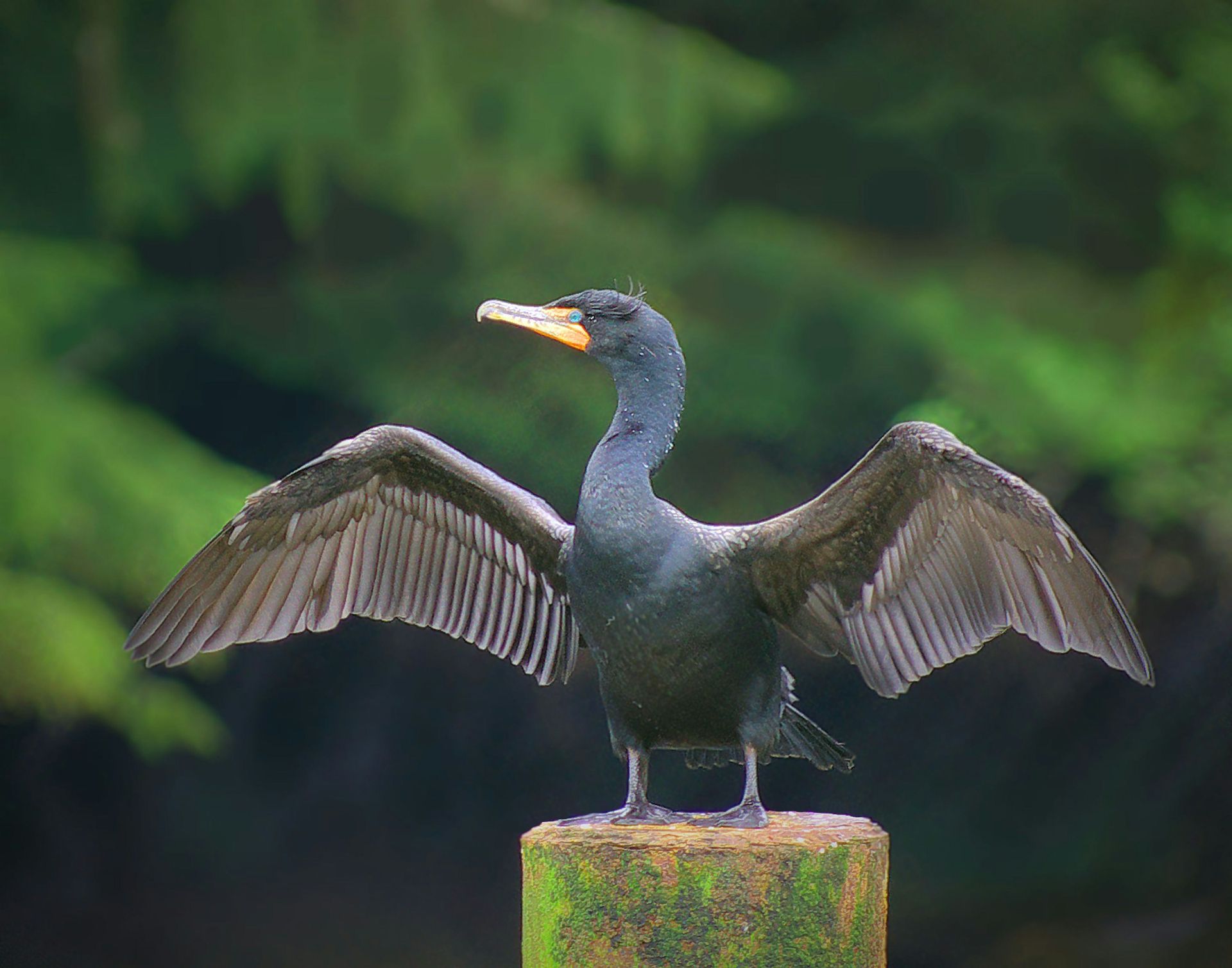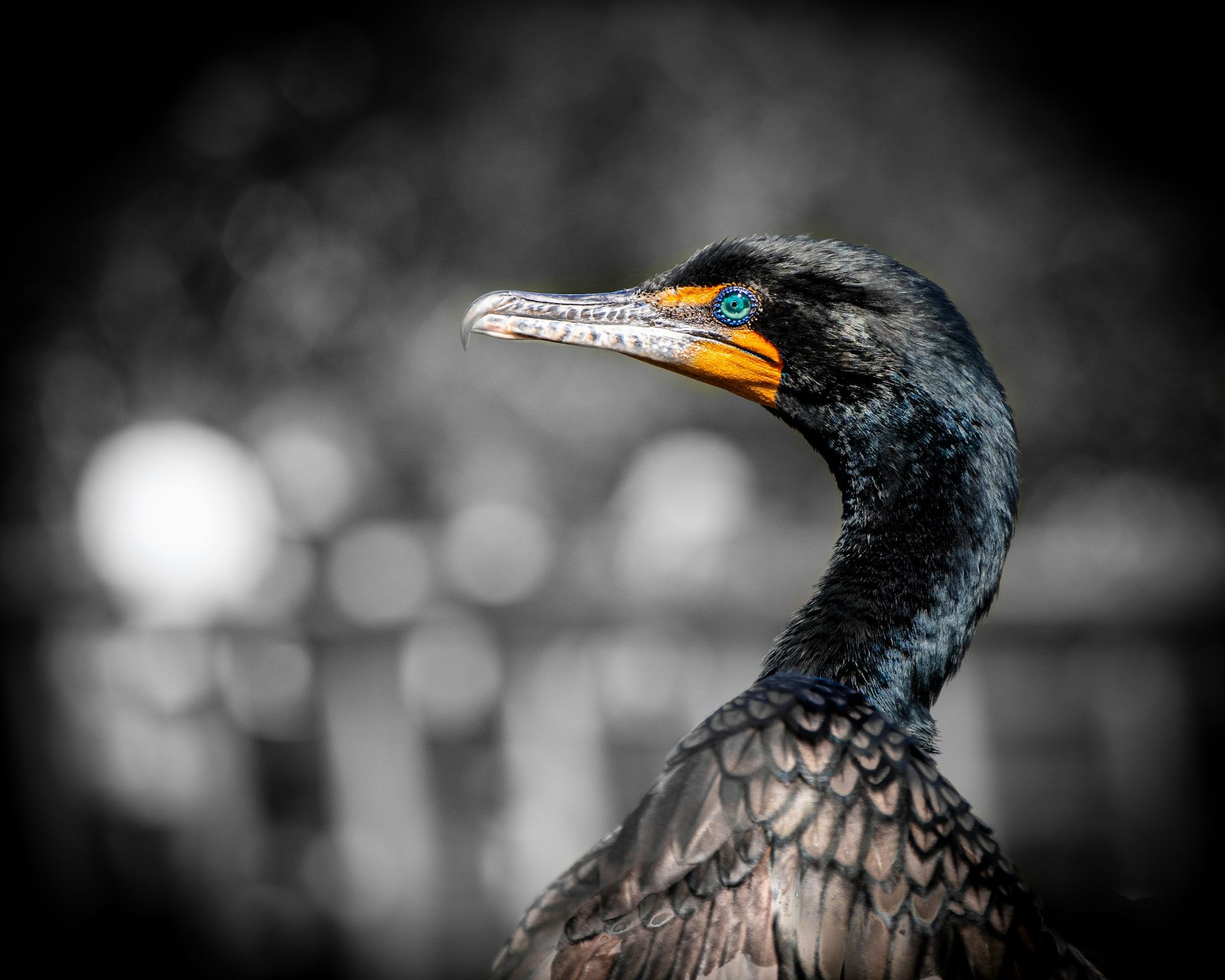Cormorants are aquatic birds known for their long necks, hooked beaks, and exceptional diving skills. Found along coastlines, lakes, and rivers around the world, these expert fishers play a crucial role in aquatic ecosystems by helping to maintain healthy fish populations. In North America, species such as the double-crested cormorant and Brandt’s cormorant are commonly observed.
Measuring between 28-35 inches in length with a wingspan of up to 4 feet, cormorants have dark plumage that appears almost black, sometimes with a greenish or bluish sheen in sunlight.
Cormorants feed primarily on fish, diving from the water's surface and using their strong legs and webbed feet to propel themselves underwater. They nest in colonies on cliffs, trees, and rocky islands, building large, bulky nests out of sticks and vegetation. During the breeding season, males perform elaborate displays to attract mates.
Natural predators include large birds of prey, such as eagles and hawks, as well as raccoons and other mammals that may raid nests. Human-related threats, including habitat destruction, pollution, and fishing industry conflicts, pose significant risks to cormorant populations.

For your safety and the well-being of wildlife, please observe animals from a distance and avoid touching or disturbing them. If you encounter an animal that appears injured or in distress, contact a licensed wildlife rescue organization for guidance before intervening.
Found An Animal? Not sure how to help a wild animal in need? Learn when to step in, who to call, and how to help safely.
Did You Know?
- Cormorants can dive up to 150 feet deep in pursuit of fish.
- They have specialized eyes that adjust to underwater vision, allowing them to see clearly while hunting.
- Unlike many waterbirds, cormorants must dry their wings because their feathers are not fully waterproof.
- Some cultures historically trained cormorants for fishing, attaching leashes to their necks to prevent them from swallowing large catches.
- They can stay submerged for over a minute while hunting underwater.
- Double-crested cormorants get their name from small tufts of feathers that appear on their heads during the breeding season.
- Cormorants regurgitate pellets of undigested fish bones and scales, similar to owls.
- Their populations were once severely impacted by pesticide pollution but have since rebounded in many areas.
- They are highly adaptable, living in both freshwater and saltwater habitats.
Problems Faced In The Wild
- Habitat Loss: Coastal development and human activity disrupt nesting and roosting sites.
- Pollution: Contaminants in water sources can harm cormorant populations and reduce prey availability.
- Fishing Industry Conflicts: Cormorants are sometimes targeted due to perceived competition with commercial fisheries.
- Climate Change: Rising sea levels and changing water temperatures affect fish populations and breeding success.
- Entanglement: Fishing nets and lines pose a significant risk of injury and death.
- Predation: Eggs and chicks are vulnerable to predation by raccoons, gulls, and other opportunistic species.
Tips For Cohabitation
- Protect Nesting Sites: Support conservation efforts that protect coastal and island habitats.
- Dispose of Fishing Gear Properly: Avoid leaving fishing lines or nets in the water.
- Reduce Water Pollution: Minimize the use of harmful chemicals that can contaminate waterways.
- Respect Colonies: Keep a safe distance from nesting colonies to avoid disturbing birds during the breeding season.
- Educate Others: Promote awareness of the ecological importance of cormorants.
- Support Sustainable Fishing Practices: Encourage fishing regulations that balance human needs with wildlife conservation.



